An Inning with Greg Maddux’s Command
Something somebody once said about Greg Maddux is he could throw a ball into a teacup. I don’t know why a teacup was chosen to represent a small target, but it certainly conveys the intended idea. Something somebody else said about pitchers is this:
“And don’t believe it when you hear that a pitcher can throw the ball to a two-inch slot. A foot and a half is more like it, I mean with any consistency. When I first came up I thought major-league pitchers had pinpoint control, and I felt terrible that the best I could do was hit an area about a foot square. Then I found out that’s what everybody meant by pinpoint control, and that I had it.”
Jim Bouton was referring to a lot of pitchers when he wrote that, and Bouton wasn’t wrong. Bouton also wrote that in the time before Greg Maddux, which was a time that didn’t know how dark it really was. It’s possible there’s been no pitcher in recent history more able to hit a spot when he wanted to, and Maddux usually wanted to.
Pitcher command is a particular interest of mine, specifically because we don’t really have numbers for it. Numbers exist out there, somewhere, but they aren’t public. That means the best we can do is go with proxies and educated guesses. For all I know, the proxies work great, and all further information would do is confirm our suspicions. Still, it’s at least partially a mystery, which makes it fun to study. And it is possible to study. Command isn’t some intangible, like clubhouse chemistry, where we think it exists but we don’t know what to do with it or how to observe it. We can observe command on every pitch of every game. It’s just that nobody does the hard work of keeping record.
Nor should anyone want to. From the outside, there’s not a lot of in-depth work we can do with command. It’s something we have to consume in little chunks, hoping they might be representative but knowing we can’t know if they are. But there’s nothing wrong with consuming them anyway, because who knows what we might learn? As long as we understand the limitations, things can’t go awry. At the absolute worst case, we spend a few minutes thinking about baseball.
I don’t know who has the best command in baseball today. I’m open to suggestions. Among the most recent pitchers, I’d volunteer Mariano Rivera, who just retired. The purpose of the following exercise, however, is to shine a spotlight on Greg Maddux. Maddux probably had the best command of anyone in the past 20 or 25 years. It’s possible that “probably” is too strong since, again, we can’t know and our memories often lie to us. Maddux, though, would probably top a public survey. Orel Hershiser gave us the teacup line, and I don’t think anyone took him for an exaggerator.
So I wanted to do with Maddux what I did with Rivera this past June. That is, I wanted to watch an inning of Greg Maddux pitching and keep track of his location. I know that one inning isn’t representative of anybody, but if Maddux had the best command in baseball, and if Maddux was the most consistent pitcher in baseball, then one inning would be the most representative, among single innings. And by following through with this, I could watch Greg Maddux pitch, which is nice.
A potential problem was finding a good clip of Maddux, since I wanted to track him in his prime. YouTube came to the rescue, and while I don’t want to link the clip out of fear of it being removed, I found video of all of Maddux’s pitches from Game 1 of the 1995 World Series against the Indians. The Braves won that game 3-2, and Maddux went the distance. He needed only 95 pitches and allowed two hits and struck out four. That seems like a pretty good Maddux start to target. That Indians team slugged .479.
I wound up settling on tracking the top of the ninth, during which Maddux faced four batters and threw 13 pitches, nine of which were strikes. I didn’t want to watch the first inning, because Maddux could’ve had some World Series jitters. And he made the middle innings go by too fast. So the ninth it was, and it wasn’t like Maddux was all that worn down. What you’re going to see are pixelated screenshots, with a red dot representing the original glove target set by Javy Lopez. What I can’t ever know is whether Maddux was trying to hit that glove, but I suppose we can proceed on a case-by-case basis.
Of course, this can’t tell us very much about Maddux. We don’t know how representative this inning was of him, and we don’t know what an average pitcher looks like. It’s just an exercise in small-sample data tracking. But here’s an inning of Maddux throwing pitches in the 1995 World Series. Actually, before I get to the screenshots, , watch this a few times:
Do you see why Greg Maddux is so fun? Greg Maddux is fun. I watched him, and here are results. Was he hitting teacups, or was he hitting shoeboxes? This is a glimpse of one of the best pitchers ever in one of the best seasons ever.
That’s one of those sinking Maddux fastballs, and it missed a bit low to Paul Sorrento. It caught the right area of the plate; it just caught the wrong part of the torso. It was a ball, by inches.
And then Maddux made Sorrento go away by getting him to roll over on another fastball away that he located with precision. Carry that ball past the bat and it settles right into Lopez’s glove with hardly any movement on the catcher’s part.
Probably Maddux’s worst pitch of the inning, a first-pitch fastball to Kenny Lofton that missed in two directions. I’ll note, however, that you might notice a theme: When Maddux did miss, he didn’t miss in a particularly hittable spot. Pitch location isn’t binary!
Here’s a fastball like the first one Maddux threw to Sorrento. This one was a tiny bit higher, so Maddux got his strike to even the count. Given the location and the movement, there was nothing Lofton could do to drive the ball.
This two-seamer ran away just off the plate. I’m getting the sense Maddux didn’t use the glove as a target, but rather used it as a starting point. His fastballs, then, would end up lower, frequently in that low-away quadrant where it’s so hard for hitters to do anything, even if they’re looking for a pitch there.
This fastball wound up right where Lopez’s glove was set up. Even though Maddux was behind in the count 2-and-1, he threw a good pitch on the edge. Still, Lofton slapped it off the end of the bat for an opposite-field single. The ball dropped in front of Mike Devereaux, who has now been mentioned on FanGraphs.
Just a perfect first-pitch fastball to Omar Vizquel. No biggie. Edge, knees, movement. Vizquel pulled back on a bunt, as he should’ve since the Indians were down by two. You’re not fooling anyone, Omar Vizquel.
This time Maddux and Lopez mixed it up. They planned to come inside and Maddux did indeed go inside, jamming Vizquel with a fastball on the edge. The pitch was up, which maybe wasn’t intended, but then maybe it was. More importantly, the pitch was horizontally accurate. Vizquel was put on the defensive, and Maddux made him go after a tough pitch.
And now it’s time for Carlos Baerga. This was a fastball over the middle at the belt in the ninth inning of a one-run game in the World Series. Whoopsadoodle! Baerga fouled it off.
And then Baerga got jammed and fouled off an inside fastball that moved the count to 0-and-2. Hitters like to say you get one hittable pitch per trip. Against Maddux, it might’ve been more like one per game. Baerga wasted his. He put Maddux out in front, as if Maddux needed the advantage.
And here come the changeups. By the target, it looks like Maddux missed. Ahead 0-and-2, though, I’m pretty certain he wanted the pitch to fall off and approach the dirt. He put the changeup in the desired zone and Baerga just got a piece to stay alive.
Same idea: 0-and-2 changeup, away and down in the dirt. This one was a little more away than the previous one. Baerga very nearly swung. He held up in the end, extending his life by, as it turns out, one pitch.
Another low, two-strike changeup. Baerga chased, Baerga hit and Baerga fouled out to give the Braves a win to open the series. Maddux came a little closer to the plate than he did at 0-and-2, but that was to goad Baerga into swinging. He clearly wanted to swing at those low changeups. Maddux gave him one that looked good enough, but Maddux’s changeups were deceptive, treacherous freaks.
This, incidentally, was Baerga’s last year of being a good regular. He was 26. He also played in the majors as recently as 2005, which is a very easy thing to forget about, making it a very incredible thing to recall. That 2005 Nationals team had some mind-blowing names.
What did we learn? Greg Maddux was good. One time out of 13 pitches, he missed in a hittable spot. His worst miss, by distance, missed across the plate but also missed low, so it was just a ball, and nothing really drive-able. Most of the time Maddux was right on, laterally, and we can’t be certain what he was trying to accomplish, vertically. He was mostly accurate, especially if the glove was a starting point instead of a destination. He wasn’t consistently hitting teacups, but he would’ve hit enough teacups for people to be like, “Maybe we shouldn’t put our teacups there. Greg Maddux keeps destroying them.”
And also, naturally, Maddux wasn’t just about location. He was fantastic at location, but he was equally fantastic at making his pitches move in ways the hitters couldn’t anticipate. So he didn’t need to be as precise as he actually was to be successful. But he was that precise, hence his becoming one of the greatest pitchers of all time. In 1995, Maddux walked 23 guys in 28 starts. Three of those were intentional. In truth, I suspect that every Greg Maddux walk was intentional. I can’t think of any other explanation.
Coming up, there’s a whole lot of baseball to be watched. Behind us, there’s a whole lot of baseball to be re-watched. I watched about 20 minutes of prime Greg Maddux today. I did it for a post, but if I’m going to be perfectly honest, I did it for me. I’d love to watch another 2,000. Go to YouTube. Find the clip I discovered and look at it.
Jeff made Lookout Landing a thing, but he does not still write there about the Mariners. He does write here, sometimes about the Mariners, but usually not.


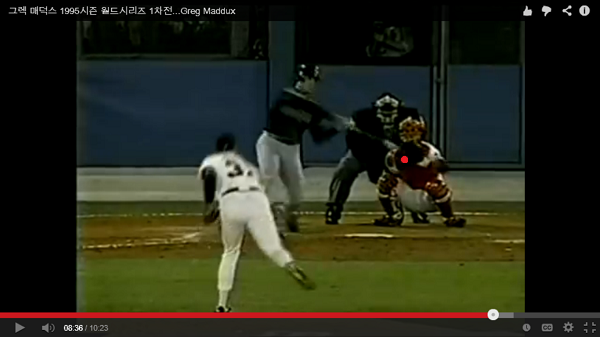


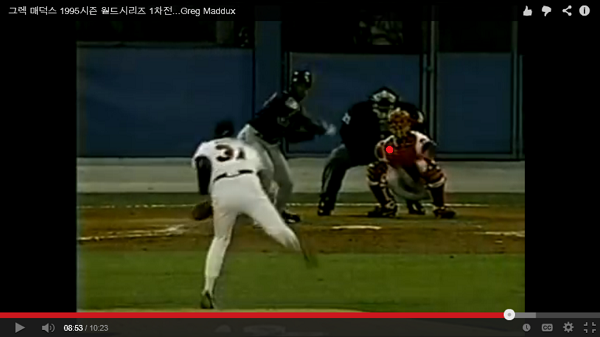

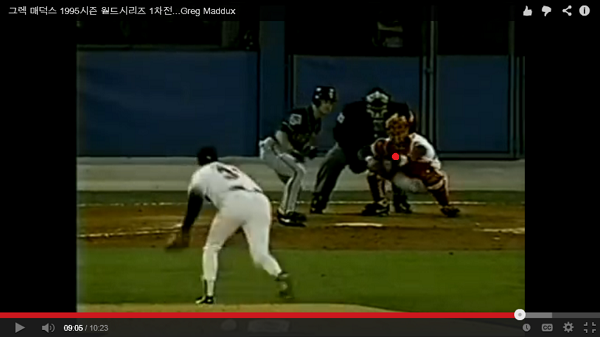

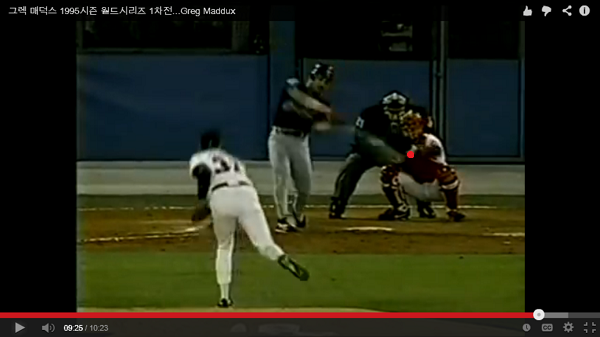

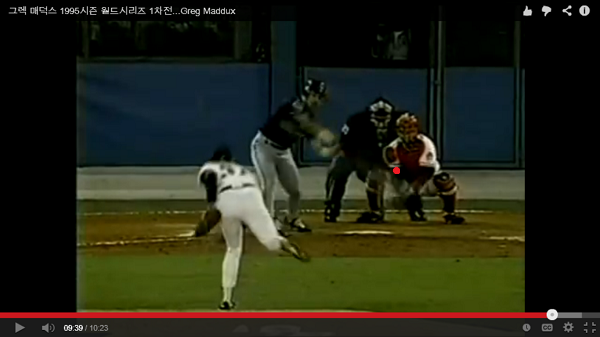


THIS is Pitcher McPitcherson.
Note – go to this BBref link to the section on Ratio Pitching:
http://www.baseball-reference.com/players/m/maddugr01-pitch.shtml
– You can see Maddux’s reknowned control and above-average ability to induce ground balls
– What jumped out at me, though, is how he beats the average in every other rate category out there save for IFFB/FB rate (13% vs 15%). I don’t know many pitchers, even HOFers, who are this consistently above average.